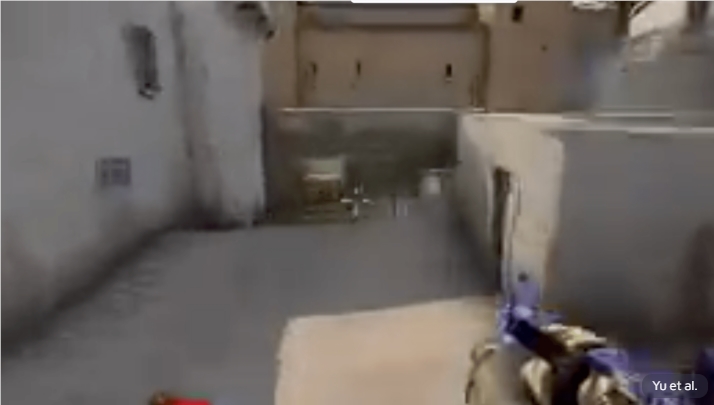The editor of Downcodes takes you through an exciting AI breakthrough! Recently, an AI model called DIAMOND successfully simulated and run a simplified version of "Counter-Strike: Global Offensive" (CS:GO), making waves in the gaming and technology fields. With its amazing efficiency and relatively low training data requirements, this model demonstrates the great potential of AI in game simulation and future virtual world construction, and has attracted widespread attention. This article will delve into the technical details, application prospects and existing challenges of the DIAMOND model.
An eye-catching AI breakthrough has recently attracted widespread attention in the gaming and technology circles. The research team successfully developed an AI model called DIAMOND (Diffusion for World Modelling), which can simulate and run a simplified version of "Counter-Strike: Global Offensive" (CS:GO) in a neural network. This innovative achievement not only demonstrates the huge potential of AI in the field of game simulation, but also provides a new idea for the construction of future virtual worlds.
One of the highlights of the DIAMOND model is its amazing efficiency. With the support of a single Nvidia RTX3090 graphics card, the model can run CS:GO simulations at 10 frames per second. What’s even more amazing is that the research team completed model training using only 87 hours of CS:GO game data, which is only equivalent to 0.5% of the amount of data used by a similar project GameNGen. Such an impressive game simulation can be produced with such limited data, which fully demonstrates the powerful performance of the DIAMOND model.

DIAMOND's core technology is based on the Transformer architecture, which treats the player's movements as tokens, similar to words in a sentence. By predicting these tokens, the model learns to predict the next move based on previous moves. This innovative approach was first applied to Atari games and has now been successfully migrated to the more complex CS:GO environment.
Researcher Eloi Alonso demonstrated the model's capabilities on social media. In the video, players use keyboard and mouse to interact with the simulated CS:GO environment. The simulation not only includes basic elements such as player interaction and weapon mechanics, but also covers complex environmental physical effects, showing a stunning sense of realism.
However, the DIAMOND model still has some obvious limitations and flaws. For example, players can jump infinitely because the model fails to fully understand the Source engine's gravity and collision detection mechanisms. Furthermore, once the player deviates from a path common in the training data, the entire simulation breaks down. These issues highlight the challenges that AI faces when simulating complex game worlds.
The research team is optimistic about the future development of DIAMOND. They believe that by increasing the amount of data and computing power, the performance of the model will be further improved. More ambitiously, they hope this technology will pave the way for the development of AI models that can navigate complex real-world environments.
It is worth mentioning that DIAMOND is inspired by the GameNGen system jointly developed by Google Research, Google DeepMind and Tel Aviv University. GameNGen is able to fully simulate parts of the classic game DOOM on a single Google TPU chip at a speed of more than 20 frames per second.
For developers and researchers wishing to explore this technology in depth, the source code for the DIAMOND model is available on GitHub. This will undoubtedly promote the birth of more innovative applications and accelerate the development of AI game simulation technology.
While DIAMOND is a breakthrough in simulating CS:GO, it also reveals the challenges AI faces in replicating complex interactive systems. As technology continues to advance, we can expect to see more realistic and smooth AI game simulations. This will not only bring revolutionary changes to game development, but may also provide valuable technical support for virtual reality, training simulators and other fields.
The emergence of the DIAMOND model opens a new chapter for the application of AI in the field of game simulation, and its open source code also provides a solid foundation for future research and development. I believe that with the continuous development of technology, AI simulation will become more realistic and perfect, bringing us a more immersive gaming experience and broader application prospects. Looking forward to more amazing AI technology breakthroughs in the future!